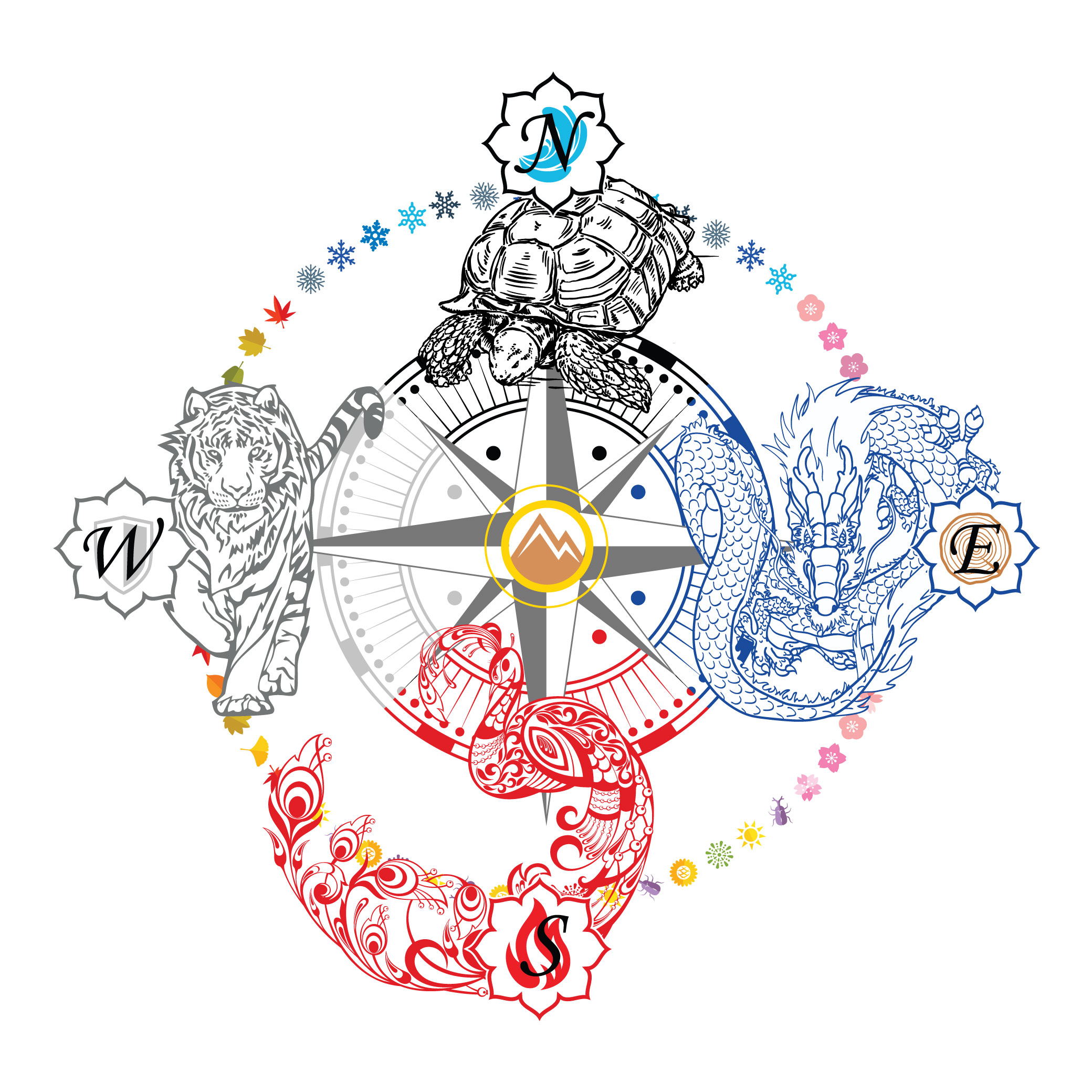
Philosophical Foundations of Korean Music
In matters private and public, official and unofficial, practical and philosophical, secular and sacred, ancient Koreans sought guidance and direction from the timeless principle of ûmyang-ohaeng-"two ways and five roads," i.e., two complimentary axles transacting with five universal elements and their material, seasonal, directional, color, and animal symbolisms:
| ûmyang-ohaeng | |||||
|---|---|---|---|---|---|
| 1 | 2 | 3 | 4 | 5 | |
| Material | Wood | Fire | Earth | Metal | Water |
| Season | Spring | Summer | Autumn | Winter | |
| Direction | East | South | Center | West | North |
| Color | Blue | Red | Yellow | White | Black |
| Animal | Blue Dragon | Red Peacock | White Tiger | Black Turtle | |
All physical and mental transactions in life are the results of their encounters, and ancient Koreans took care to make favorable such important matters as matrimony, birth, healing, and burial. The five elements in the context of human physiology represent the five organs, as the mystic explains in his diagnosis of the cause of Dragon King's illness in the p'ansori[2]"Indigenous Korean tradition of story singing." version of Song of the Underwater Palace:
|
Lyrics
|
|
Heart and small intestines are fire, liver and gallbladder, wood,
Lung and large intestines, metal, kidney and bladder, water, and spleen and stomach, earth. When liver's enlarged, Wood suppresses earth and weakens spleen and stomach. Gallbladder over-activity causes nerve hypersensitivity, ung and large intestinal over-activity weakens liver and gallbladder.[3]Translated from The Song of Medicine, from P'ansori Sugungga, Song of the Underwater Palace, one of the five remaining p'ansori narratives still sung. The Dragon King of the Underwater Palace falls ill. All the medicines and doctors cannot cure him. But a mystic lands from heaven, and checking the king's pulse, delivers this basic diagnostic principle. |





Korean traditional music can be divided into Korean folk music, aristocratic chamber music, Korean court music, and religious music.





